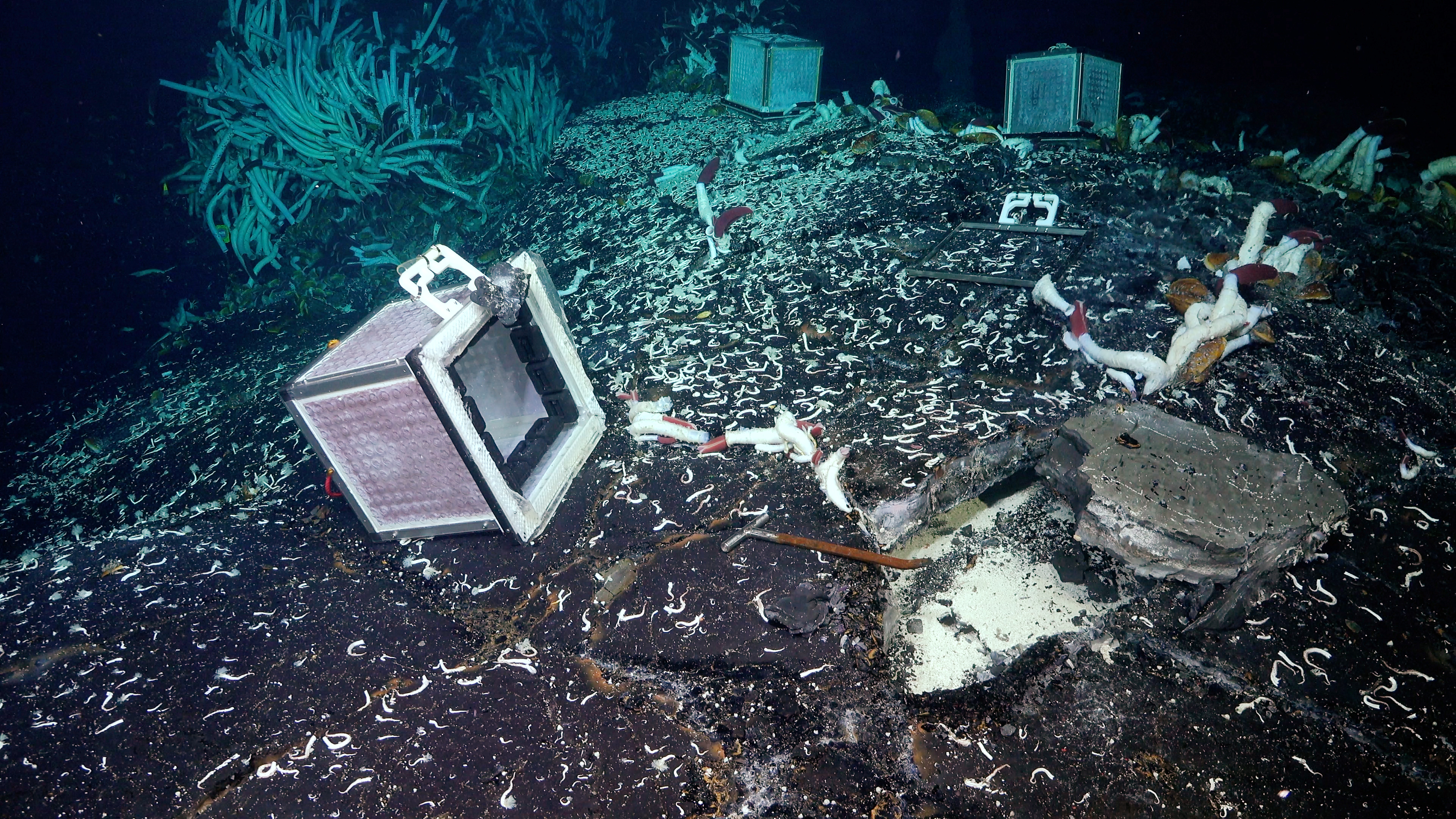For the first time, scientists have discovered animal life under the seafloor around deep hydrothermal vent systems. The new discovery challenges the old idea that only microbes inhabit the subseafloor region and suggests that much more of Earth’s crust might harbor complex lifeforms.
Researchers onboard the Schmidt Ocean Institute research vessel Falkor (too) used remotely operated vehicles to explore the seafloor around the East Pacific Rise, a volcanically violent ridge where two tectonic plates meet on the floor of the Pacific Ocean.
While attempting to investigate how animal larvae settled on the seabed, they stumbled across animal life in hydrothermal fluid-filled cavities beneath the surface of the crust at a water depth of over 2,500 meters (8,200 feet).
In the warm pockets nestled between two converging crusts, the team documented the presence of giant tube worms (Riftia pachyptila), aka giant beardworms, a species that can grow up to 3 meters (9 feet 10 inches) in length. They also found a throng of mobile animals, including snails, mussels, and many other species of worm.

A glimpse into the uncovered warm, fluid-filled subsurface cavity at the deep-sea hydrothermal vents. A chisel was used to dig into the subsurface.
Other scientists have previously found colossal ecosystems of microbial life beneath the Earth’s surface, even in terrestrial regions not beneath the sea. In fact, some estimate that approximately 70 percent of microbial life on the planet lives underground. However, it’s the first time scientists have discovered ecosystems of animal life below the seafloor in this context.
Some of the scientists announced the discovery last year, but the international team led by the University of Vienna and the Royal Netherlands Institute for Sea Research has just published the findings in a peer-reviewed journal.
“Here we report, to our knowledge for the first time, the discovery of animals excavated from fluid-filled, shallow cavities in the subseafloor of deep-sea hydrothermal vents,” the study authors write in their paper.
The question is: what are the animals doing down there? The researchers believe that the young larvae of seafloor communities may settle in these subseafloor habitats, traveling through the subseafloor via vent fluids. If that’s accurate, it indicates that the ecosystems of the ocean, the seafloor, and the subseafloor are deeply connected in a dynamic relationship.
It’s likely that we’re only just touching the surface (so to speak) of animal life that inhabits the crust beneath the seabed. Although the study only studied a small section of the Pacific seafloor, the team suggest that much of the subseafloor crust across the world could potentially host animal life.
“The discovery of animal life beneath the surface of the Earth’s crust raises questions concerning the extent of these ecosystems, which is larger than what can be seen on the seafloor surface,” the study authors add.
“The study of the subseafloor biosphere for animal life has just begun,” they added.
The study is published in the journal Nature Communications.
Source Link: Rich Ecosystem Of Animal Life Found Under Seafloor At 2,500 Meters Water Depth